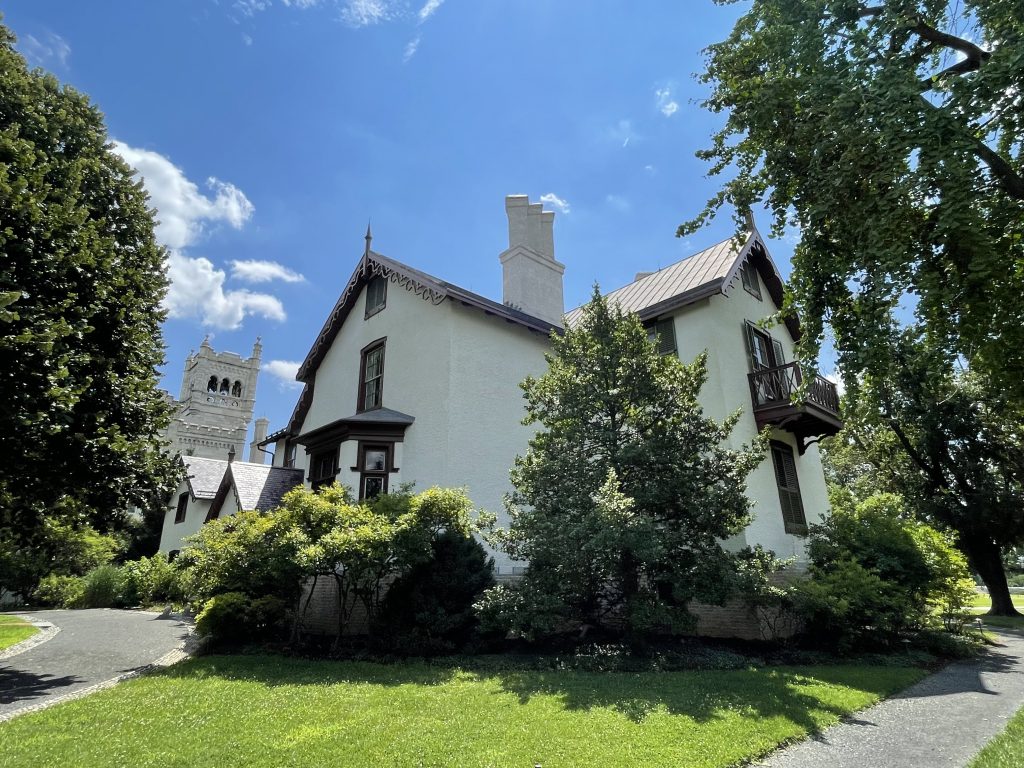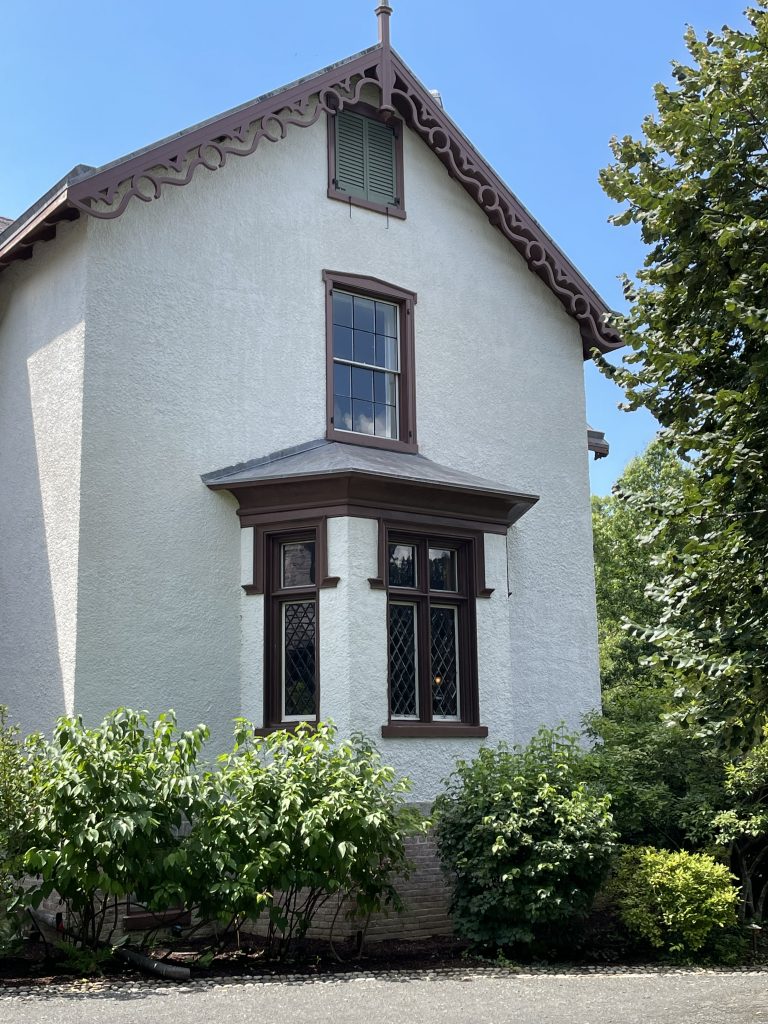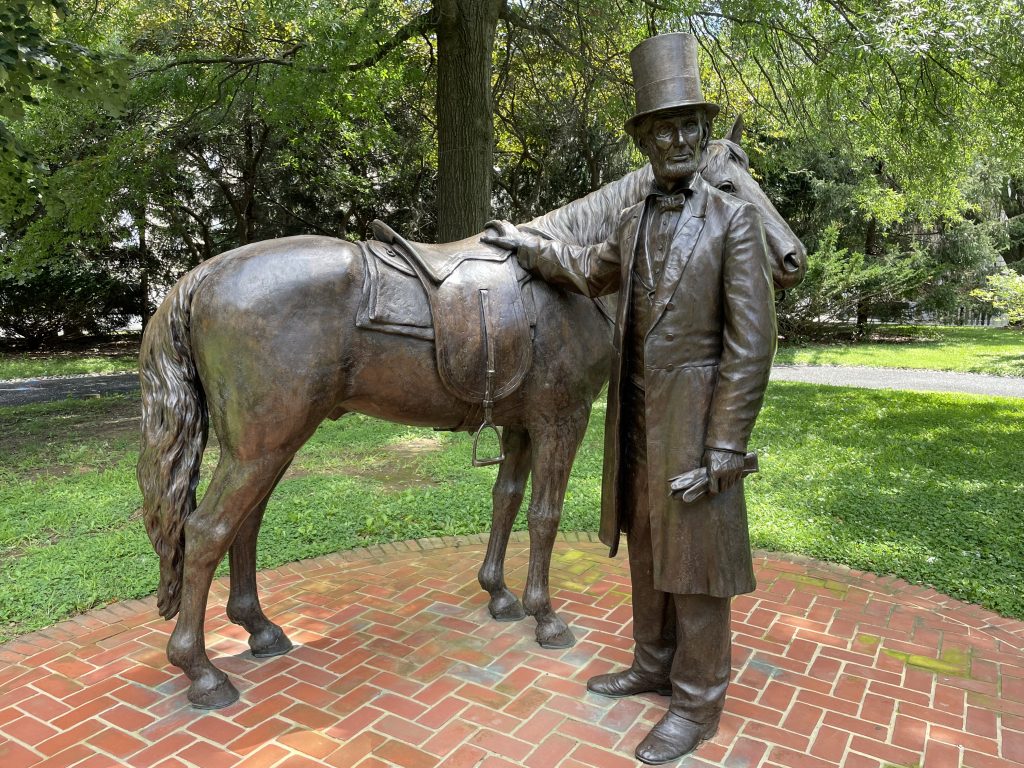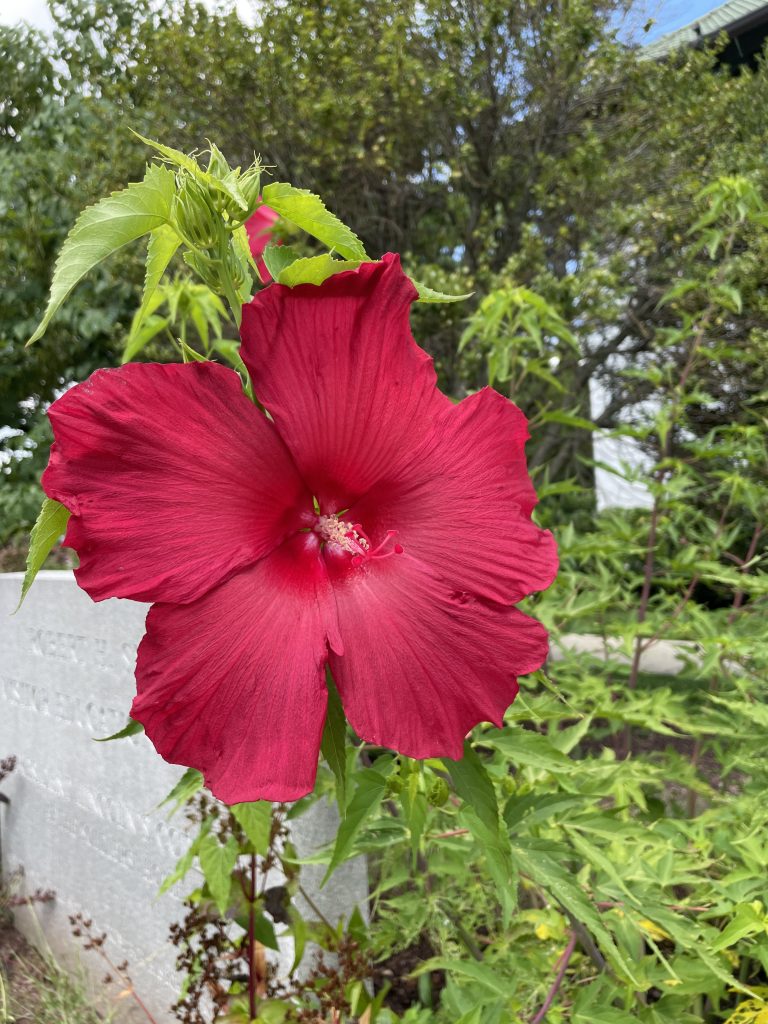The day after visiting the family home of President Lincoln’s assassin, John Wilkes Booth, we headed to the outskirts of Washington D.C. for our second attempt at touring President Lincoln’s Cottage. While it is quite lovely on the outside, it is bare on the inside (which made the “no pictures” rule slightly less disappointing). The home has seen many uses since the days when the Lincolns lived there, so even the empty rooms are changed from the Lincolns’ time. The tour guide ran well over on time, trying desperately to weave the historical threads into a sweeping narrative but not quite succeeding. We both felt there was some missed opportunity there.
The Gothic Revival “cottage” was built in 1843 for banker and businessman George Washington Riggs. He did not live here long before selling the extensive property to the government, who established a home for retired and wounded soldiers. Looking to expand their political connections, it was this organization that extended the use of the home to the President as an escape from D.C. Located on one of the highest points in the District, the grounds offered fresher air and cleaner water than down in D.C. proper.
Though known as Lincoln’s cottage, President Buchanan used the home before him, and Presidents Hayes and Arthur used the home after him. Lincoln, however, wrote a draft of the Emancipation Proclamation here, so his name is the one now attached to it.

The home is less than five miles from the White House, and was used as a summer home (“summer” running from June to November, in this context) by the Lincolns from 1862-1865. During the Civil War, the many soldiers were camped in town while Typhoid (and other diseases) ran rampant. Tragically, Typhoid killed the Lincolns’ 11-year-old son, Willie in 1862. As such, the home also served as an escape of the memories of their son’s lingering illness and awful death in the White House.
Additionally, on his daily commutes to the White House, President Lincoln met many people as he ambled along on horseback, including newly freed enslaved persons. The military cemetery across the street from the grounds was the constant site of burials of Civil War soldiers, another frequent reminder of something that Lincoln was never able to forget. His daily exposure to the human cost of war, from the injured soldiers to the poverty of the newly freed men and women, had a profound impact on the President, surely contributing to his commitment to end slavery.

The grounds still house retired and wounded service personnel today, now from all five branches of the military. The adjacent visitors center has a few rooms of exhibits about Lincoln’s Presidency, as well.








Love reading your stories! Always so informative & interesting! I always love the flower pictures too!
I’m operating under the idea that everyone loves flower pictures. That’s my story.